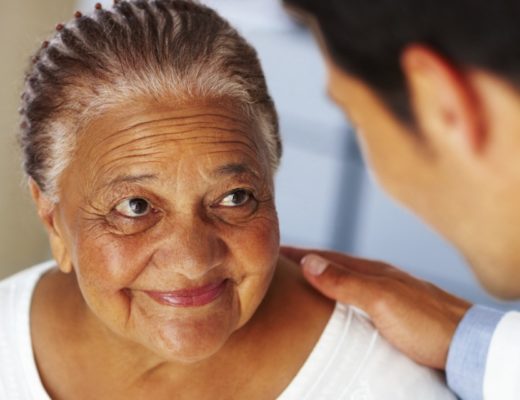The thing I like about his lectures the most are his commentary on things that are NOT medically related. At age 60+, Roger Hadley, the dean of the school of medicine is an engaging speaker. He doesn’t come across as an imposing person. Standing at about 5 foot 10 with gray hair, soft eyes, a gentle smile, he could blend into a crowd if it weren’t for the fact that he is the dean of the school of medicine.
He shows us picture of a plane surrounded by a rainbow. During a flight, he had snapped a picture 30,000 feet in the air.

It’s an optical phenomenon called glory and is only observed at sunset or sunrise. Apparently, scientists are still arguing the science behind it.
He then dove into the problem of the shortage of doctors in the future. With the ever-aging population there wouldn’t be enough doctors to keep up with the demand – neither specialists nor primary care. The challenge with meeting this demand is that it takes about 10 years to train a doctor. In response to this problem new medical schools are popping up. But while the number of medical school openings has increased, residency training openings have not increased to the same degree creating a bottleneck.
Due to these logistics, one of the strategies has been to pull doctors from retirement and get them back to work either part time or full time in order to meet the demand.
But in the middle of his presentation he put up the graph Social Determinants of Health, something I hadn’t seen in a while but a good reminder.

Here are a few insights.
-
Genes and biology determine only 10% of a population’s health.
The way patients talk about their genes, one would think the number to be much higher. I had a patient who said that his grandfather had diabetes, his father had diabetes and as a result it was only inevitable that he would get diabetes. I wish I had this graph to show him at the time. While understanding family history can help us determine risk factors, it seems to play a smaller role than what many perceive.
-
Health Behaviors, Social and Economic Factors make the biggest impact on a population’s health.
This reinforces the idea that much of health is a choice. Health behaviors refer to diet and exercise, tobacco and alcohol use, and unsafe sexual practices. Social economic Factors refer to level of education, employment, income and social support. Our individual choices have the biggest impact towards our longevity.
The church can also be instrumental in this area. Churches typically discourage the use of tobacco, unsafe sexual practices and excessive alcohol use. Other churches encourage proper diet and exercise. The social component a church provides cannot be ignored. Evidence shows those who are socially supported consistently do better than those socially isolated.
One of the reasons for this is because when you belong to a community, you are connected with more resources. We had a patient at our church who needed a major surgery but insurance wouldn’t cover it. The surgery would cost about $30,000. The church threw a fundraiser and rallied around her raising the required amount. That’s the power of social connection.
-
The impact of clinical care is a mere 10%.
Dr. Hadley pointed out some of the obvious features of the graph such as how much individual choice affects our health. But he also pointed out to the sliver of 10% to this group of physicians.
“Clinical care is a mere 10%. I’ve looked at several studies and they all seem to agree with this number. The best we can do as physicians is 10%,” he said.
I went home that conference thinking about that number. The best I can do is 10%. I had gone into this noble profession thinking I can make an impact. Apparently the studies showed the best I could do was 10%. That wasn’t good enough.
Those who enter medical school tend to be idealist and I was no different. When the speaker at my high school graduation said, “You can change the world,” I actually had the temerity to think I actually could. So I went to medical school and residency with the intent to do so. But studies say my impact is 10% at best.
When I came to Northern Idaho, I didn’t just want to practice typical clinical medicine. I wanted to do more than that. I wanted to do medical ministry – caring for the whole person – body, mind soul and spirit.
In my pursuit of this kind of medicine I recognize that God is calling me beyond the 10%. Diagnosing and treating isn’t good enough. Even preventive medicine falls short. Somehow I also need to go into the personal spaces of patients and help them make better choices. Somehow I need to help connect those who are socially isolated with the church. God calls me beyond the 10%. And somehow I must get there.





3 Comments
Go Roquiz Go! I read your article as I ate my rice and raw foods. God is soo good continue reaching for Him and He will be your present helper!
Amen Whitaker. Bless you.
Go raw at least a little!